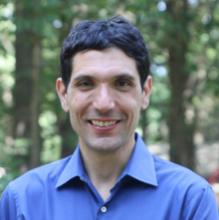Physicists Report Evidence of a Quicker-Than-Light Particle

Image credits: Clker-Free-Vector-Images via Pixabay
Updated Nov. 18, 2011 9:20 a.m. EST - Researchers have carried out an improved version of their original experiment and have found the same result: neutrinos traveling faster than light in a vacuum. View the updated preprint report.
(ISNS) -- In what would represent the biggest physics discovery in the century thus far if confirmed, researchers announced that they have measured particles traveling faster than the speed of light, which -- at least up to now -- has been the speed limit of everything in the universe.
Researchers from the OPERA (Oscillation Project with Emulsion-tRacking Apparatus) experiment presented their results on Friday at a seminar at CERN, the European Organization for Nuclear Research, following a preprint post Thursday night on the science website arXiv.
But the OPERA researchers are the first to emphasize it is too early to speculate on the possible implications. Though the OPERA collaboration has performed thorough analysis of their measurements, the researchers acknowledge the possibility of an overlooked or presently unknown error that would skew the results. They said they are presenting their results to the physics community so that others could check their results and try to duplicate their experiments.
OPERA measured the transit time of particles known as muon neutrinos traveling approximately 455 miles from the CERN accelerator in Switzerland to the Gran Sasso Laboratory in Italy. Measuring over 15,000 neutrino arrivals at Gran Sasso, they found unexpectedly that the particles arrived 60 nanoseconds (billionths of a second) faster than light would have arrived. This represents a speed 0.002 percent faster than the speed of light, which travels at about 186,000 miles per second.
"It's quite simple; it's a classical measurement," said OPERA team member Dario Autiero of the Institute of Nuclear Physics in Lyon during Friday's seminar.
To determine the velocity, the team divided the distance the neutrinos traveled by the time it took them to complete their one-way trip. The team computed an overall accuracy of their time of flight measurements to within 10 nanoseconds. They had a sophisticated timing system that received signals from GPS satellites, which in turn contain precise atomic clocks.
Particles Shake Up Physics World
Through their measurements, the OPERA team knew the accuracy of the neutrino's 455-mile travel distance to within about 8 inches. On their journey, the neutrinos travel mostly through solid rock. At Gran Sasso they encountered a detector consisting of several "bricks" of photographic film in between sheets of lead. A tiny fraction of neutrinos interacted with the target to produce photons, which are observed with sensitive photodetectors.
"No matter how good the experiment is, I'm going to be skeptical until it's confirmed by an independent experiment because it's such a revolutionary result," said V. Alan Kostelecky, a theoretical physicist at Indiana University. "Extraordinary claims require extraordinary proof. It requires cross-comparisons and cross verifications and independent experiments. I'd be delighted if [a faster-than-light particle] were found. I'd really like to know if the effect is there and I'll only be convinced if it's detected in multiple ways."
Neutrinos Add Another Layer of Mystery
Neutrinos are one of the most common particles in the universe but also one of the hardest to detect. They are invisible and they rarely interact with other matter. Predicted by the physicist Wolfgang Pauli in 1930 to explain what was carrying away "missing energy" in nuclear reactions, neutrinos were finally detected in nuclear-beam experiments in 1956 in the United States by Frederick Reines and Clyde Cowan. Three types of neutrinos -- known as electron, muon and tau -- are known to exist. They are now known to carry away up to 99 percent of the energy in an exploding star.
"Neutrino speed hasn't been well characterized," said Alan Chodos of the American Physical Society. Chodos, along with Kostelecky and Avi Hauser, then at Yale University, published a series of theoretical papers starting in 1985 hypothesizing the possibility that neutrinos could be "tachyons," or particles that travel faster than the speed of light.
An exploding star known as Supernova 1987a offered potential clues on neutrino speed. It released a burst of electron neutrinos that arrived at the Earth earlier than the light from the explosion, but Chodos said that other effects such as light being trapped inside the exploding star could have accounted for the difference. The less sociable neutrinos may have zipped through. However, subsequent analysis of that supernova found that the speed of the neutrinos was within a part per billion of light speed -- at least 50 times smaller than the effect being reported today and consistent with a speed no bigger than that of light.
More recently, the MINOS (Main Injector Neutrino Oscillation Search) experiment in the United States reported in 2007 evidence of faster-than-light travel for muon neutrinos; however the statistical quality of the data was not at the level of the OPERA results.
During Friday's seminar, the most frequent questions from other scientists in the audience were if the OPERA collaboration had double-checked the precise distance from CERN to Gran Sasso, and if they fully accounted for effects such as tides, and Autiero responded that they had made multiple independent measurements of the distances.
'Physics Revolution' Reports May Be Greatly Exaggerated
If confirmed, faster-than-light particles would cause at the very least a revision in modern physics, which has rested on a foundation that includes the speed of light as a sort of cosmic speed limit. Although the concept of higher speeds opens the door to a whole host of possibly complicated issues, a faster-than-light particle does not necessarily undermine everyday notions of cause and effect. For one thing, said Chodos, if it only occurs in neutrinos they would not have a noticeable effect on everyday life.
Violating causality, added Kostelecky, requires that observing a chain of events in one frame of reference would be reversed in a second frame of reference, and this would not necessarily occur if neutrinos have special interactions with the medium in which they are traveling. According to Kostelecky, a class of theories known as Standard Model Extensions allows for faster than light particles which would include new phenomena, but not require radically rewriting the laws of physics.

